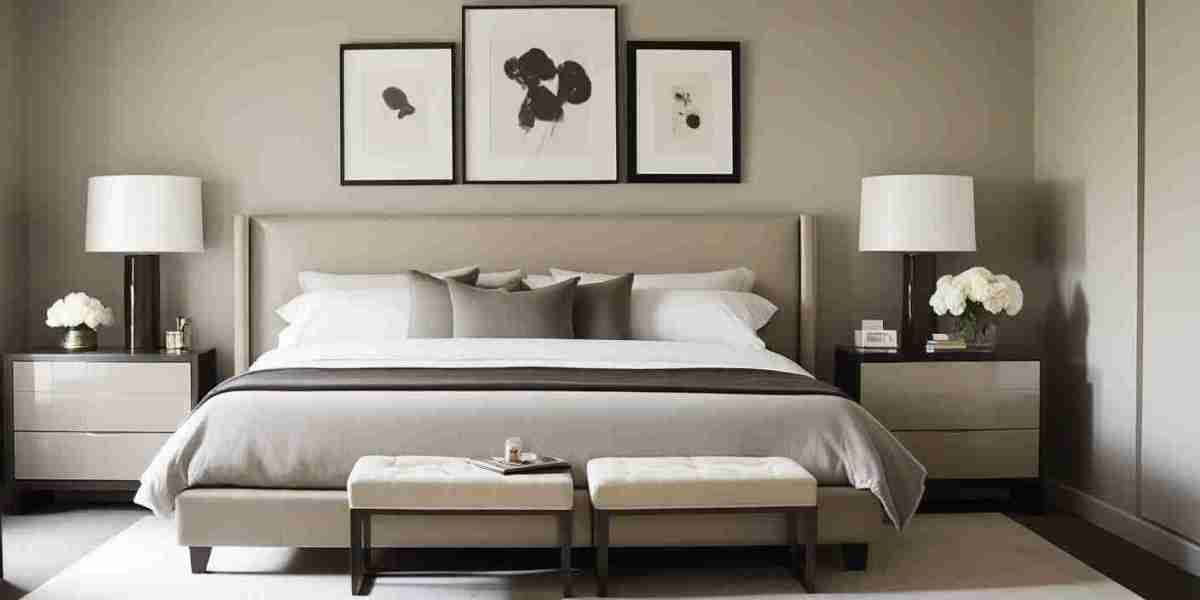Creating a harmonious and visually appealing bedroom design is essential for promoting relaxation and enhancing the overall ambiance of your space. Among the most critical components in bedroom furniture, dresser table and nightstands play a significant role in defining the room’s aesthetic. When carefully matched, they can provide a cohesive and balanced look, transforming your bedroom into a sanctuary of style and function.
Why Matching Dressers and Nightstands Matters
Matching dressers and nightstands isn't just about aesthetics—it’s also about achieving functional harmony. These two furniture pieces often sit prominently in a bedroom, serving as both practical storage solutions and decorative elements. When they complement each other, they create a unified appearance that ties the entire room together. This cohesiveness can impact the mood of your space, making it feel more organized and tranquil. On the other hand, mismatched or clashing pieces can disrupt the room's flow, resulting in a disjointed look that may feel chaotic or unfinished.
Factors to Consider When Matching Dressers and Nightstands
Achieving a cohesive look involves more than just picking pieces in the same color or style. To get it right, consider these factors:
1. Style
The style of your dresser and nightstands should align with the overall design theme of your bedroom. Whether you prefer modern minimalism, rustic charm, or classic elegance, ensure both pieces reflect the same aesthetic. For example, a sleek, high-gloss dresser pairs well with streamlined, contemporary nightstands.
2. Material and Finish
Choosing the same or complementary materials and finishes is crucial for achieving a cohesive look. If your dresser is made of dark mahogany, opt for nightstands with the same wood or a lighter shade that blends seamlessly. For a more eclectic style, mix materials like wood and metal, ensuring the finishes don’t clash.
3. Scale and Proportion
Proportions matter when pairing dressers and nightstands. A bulky, oversized dresser might overshadow petite nightstands, creating an unbalanced look. Similarly, a minimalist dresser paired with large, ornate nightstands can feel mismatched. Strive for proportional harmony by selecting pieces that align in size and scale.
4. Hardware
The hardware—such as drawer pulls and handles—should also match or coordinate. Consistent hardware can tie the pieces together, even if the furniture designs vary slightly.
5. Functionality
While aesthetics are important, functionality should not be overlooked. Ensure the dresser and nightstands meet your storage and usability needs. For example, if you need ample bedside storage, choose nightstands with multiple drawers that complement the storage capacity of your dresser.
Popular Matching Styles for Dressers and Nightstands
1. Modern and Minimalist
Modern designs emphasize clean lines and simplicity. For a cohesive look, pair a low-profile dresser in a high-gloss finish with nightstands featuring sleek, straight edges and minimal hardware.
2. Rustic and Farmhouse
Rustic styles celebrate natural wood textures and earthy tones. Match a weathered wood dresser with nightstands that feature similar grains and finishes. Accents like wrought iron hardware can further unify the look.
3. Traditional and Timeless
Traditional bedroom furniture often features ornate details and rich wood tones. To achieve harmony, choose nightstands with carved accents or intricate detailing that mirror the craftsmanship of your dresser.
4. Eclectic and Unique
For an eclectic look, combine pieces with complementary elements rather than identical designs. For example, a mid-century modern dresser can pair well with industrial-inspired nightstands, as long as the colors and finishes complement each other.
Tips for Creating a Cohesive Look
1. Stick to a Color Palette
A unified color palette can instantly tie your furniture together. If the pieces are not identical, use matching tones or complementary hues to achieve visual consistency. Neutral palettes work well for creating a timeless look, while bold contrasts can add personality to your bedroom.
2. Use Accessories to Bridge the Gap
Decorative items like lamps, vases, or picture frames can help unify mismatched pieces. Place matching accessories on both the dresser and nightstands to create a sense of continuity.
3. Experiment with Symmetry
Symmetry can be a powerful design tool in the bedroom. Place identical lamps or decor items on both nightstands, and center the dresser against the wall to establish balance.
4. Don’t Be Afraid to Mix Textures
While matching materials is a safe choice, mixing textures can add depth to your design. For instance, a wood dresser paired with metal or mirrored nightstands can create an interesting contrast while still feeling cohesive.
5. Consider Customization
If you struggle to find the perfect match, consider customizing your furniture. Repainting or refinishing a dresser or nightstands can align their appearances and create a bespoke look.
Matching Dressers and Nightstands in Small Spaces
In smaller bedrooms, every piece of furniture counts. Matching dressers and nightstands can prevent the room from feeling cramped or cluttered. Opt for compact designs that share similar lines and finishes. Floating nightstands or wall-mounted dressers can save space while maintaining a cohesive look.
Balancing Trends and Timelessness
While it's tempting to follow the latest furniture trends, opt for designs that balance modern aesthetics with timeless appeal. This ensures your dresser and nightstands will remain stylish for years to come, even as trends evolve. Neutral colors, classic materials, and versatile designs are excellent choices for achieving longevity.
Mistakes to Avoid
1. Ignoring Scale
Avoid pairing a towering dresser with tiny nightstands or vice versa. The mismatch in scale can disrupt the room’s visual flow.
2. Clashing Finishes
Contrasting finishes can work in some cases, but overly clashing tones or textures can create a disjointed look.
3. Overloading with Accessories
While accessories can unify furniture, too many decorative items can make the room feel cluttered. Choose a few well-curated pieces for balance.
The Role of Lighting in Highlighting Furniture
Lighting plays a vital role in emphasizing the cohesiveness of your furniture. Place matching table lamps on your nightstands, and use accent lighting to highlight the dresser. Proper lighting can enhance the symmetry and unity of your bedroom design.
Conclusion
Matching dressers and nightstands is an art that combines aesthetics, functionality, and personal style. By considering factors like material, scale, and design consistency, you can create a cohesive and inviting bedroom space that reflects your taste. Whether you prefer a perfectly matched set or a more eclectic mix, the key lies in achieving visual harmony and ensuring your furniture complements the overall design of your bedroom. With these tips, you’re well on your way to designing a space that’s as stylish as it is functional


